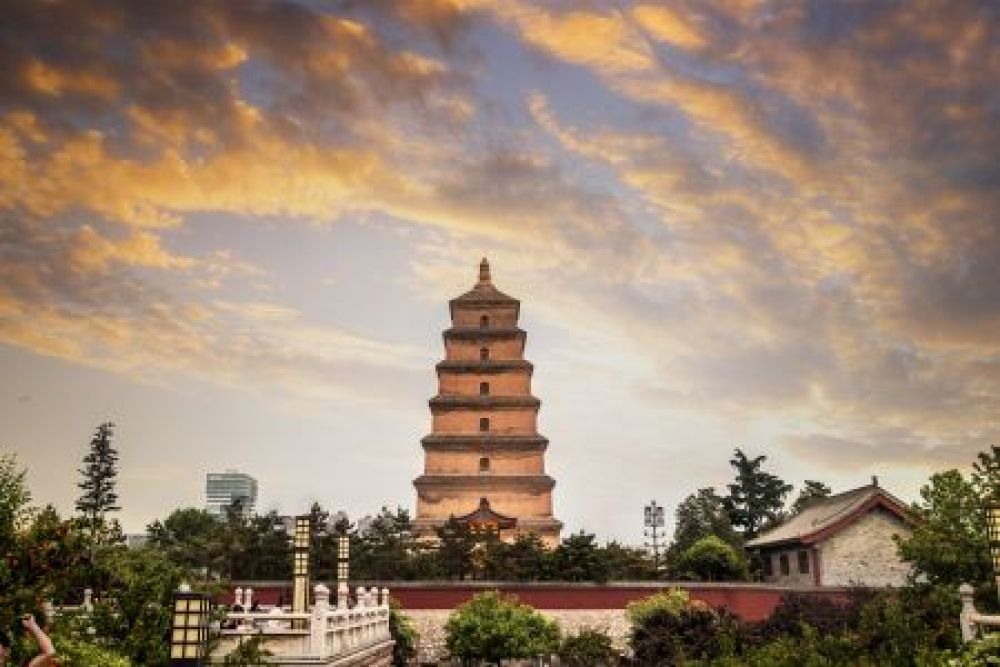

The Big Wild Goose Pagoda, situated in Xi'an, Shaanxi Province, China, stands as a testament to the region's rich historical fabric that has attracted travelers for centuries. Dating back to its construction in 652 during the Tang Dynasty, the purpose of the pagoda was to house Buddhist materials that were brought from India by the monk Xuanzang. Over the years, it has not only served as a symbol of ancient Chinese architecture but also as a beacon for those interested in Buddhism, history, and culture.
Tourism at the Big Wild Goose Pagoda began to flourish significantly with the opening of China to the world in the late 20th century. As international travel became more accessible, and interest in China's historical and cultural treasures surged, the pagoda's popularity as a tourist destination grew. It has been a UNESCO World Heritage Site as part of the "Historic Monuments of Dengfeng" since 2010, which only increased its appeal as a stand-out attraction within Xi'an's extensive list of historical sites.
As tourism evolved, there was a notable shift towards cultural tourism in Xi'an. Visitors became more interested in the authentic experiences, with the Big Wild Goose Pagoda offering insights into the spirituality, art, and academic wisdom of ancient China. Engaging with local traditions such as calligraphy, painting, and the vibrant Spring Festival have become integral parts of the visitor experience.
In recent years, the area surrounding the pagoda has been developed to enhance the tourist experience, including beautiful gardens, squares, and museums. The nightly fountain show at the North Square of the Big Wildish Goose Pagoda is hailed as one of the largest in Asia and is a modern addition to the ancient site, showcasing a spectacular blend of music, light, and water – drawing in crowds and solidifying the pagoda's status as an entertainment hotspot as well as a cultural landmark.
The rise of digital technology in the tourism sector has not left the Big Wild Goose Pagoda behind. With the advent of social media and online travel platforms, potential travelers can virtually explore the site before visiting. Xi'an's tourism authorities have also made efforts to provide multimedia guides, virtual reality experiences, and mobile apps to cater to tech-savvy tourists and enhance the educational aspect of the visits.
Amid growing concerns over tourism's impact on historical sites, there has been a concerted effort to promote sustainable tourism practices at the Big Wild Goose Pagoda. Measures are in place to protect the integrity of the monument while allowing tourists to enjoy the site responsibly. Visitor flow management and conservation initiatives ensure that while the site remains a prime destination for tourists, it is preserved for future generations.
The Big Wild Goose Pagoda's role in Xi'an's tourism history is a dynamic one, marked by cultural reverence and modern advancements. From the early days as a quiet site of pilgrimage to its current status as a celebrated cultural icon attracting millions, the pagoda remains a cornerstone of not just Xi'an, but China's tourism narrative.